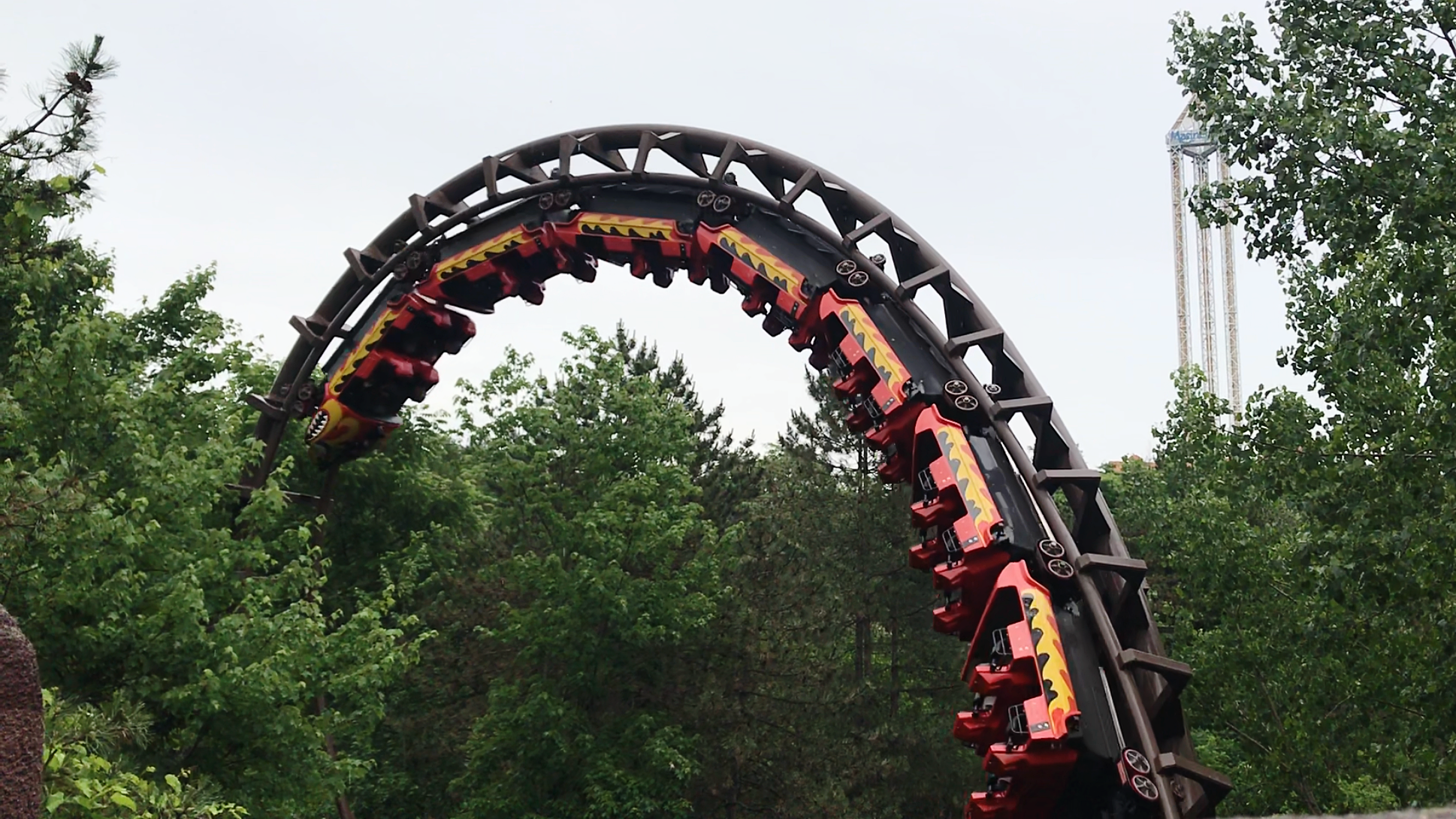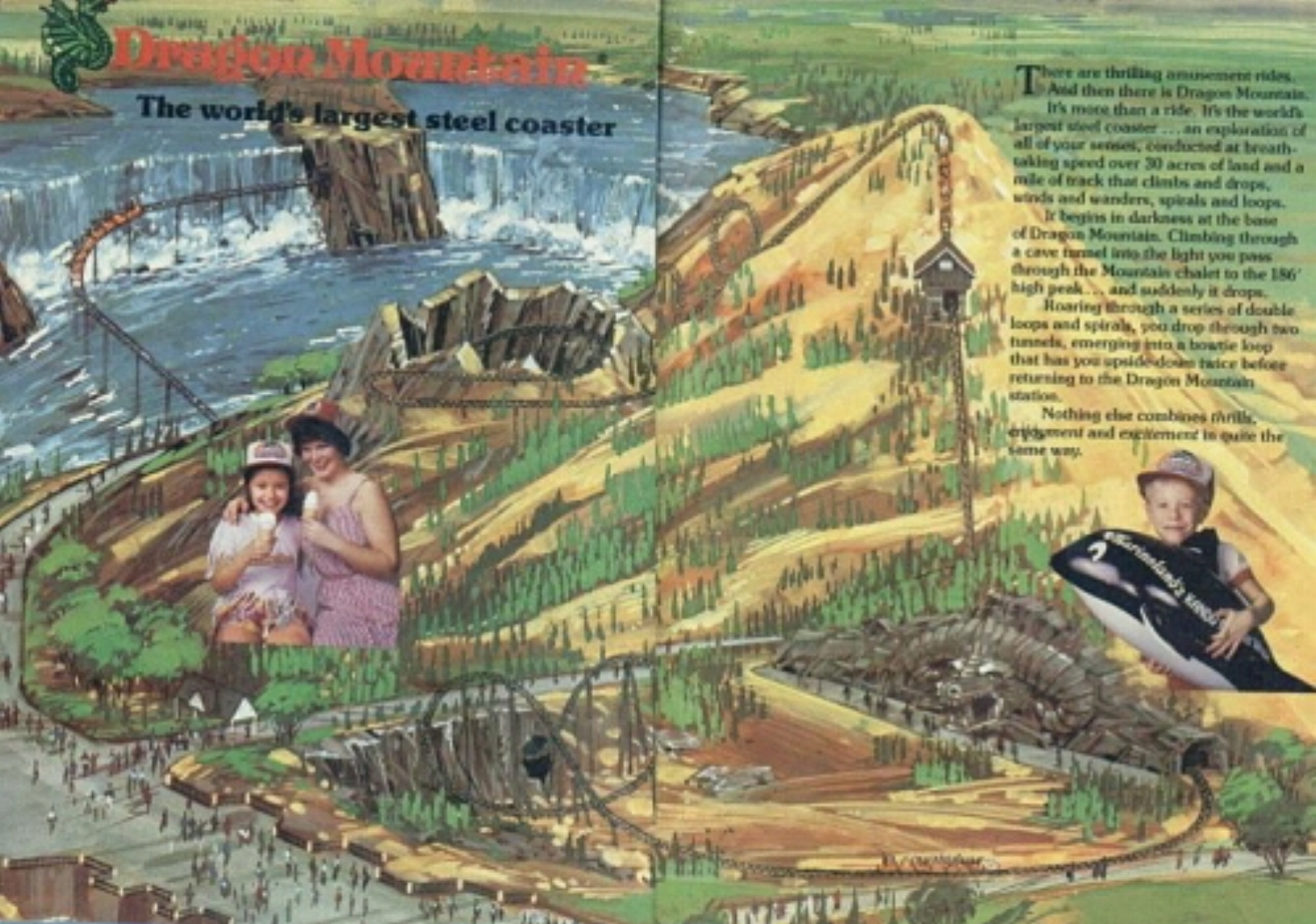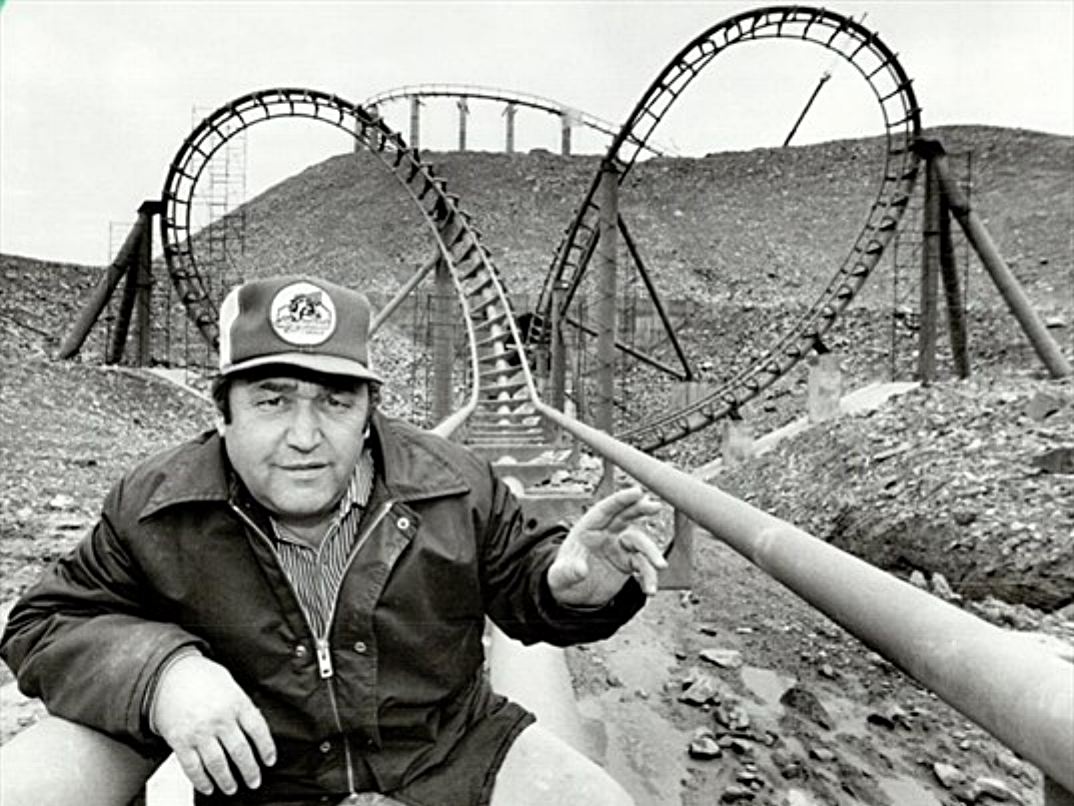What is: Dragon Mountain
Look, we understand. You guys want us to make high quality “What is”/”What was” videos on famous rides such as Beast at Kings Island and Gravity Max at Lihpao Land. We do too! However, these videos are often difficult to produce due to the lack of quality footage available for us to use. But, we don’t want to ignore them! Therefore, we’ve decided that some of the more interesting and unique roller coasters could be explained through our blog! Hopefully, you guys enjoy this and it is about as good as the original Coaster Bot (“What is: Nemesis - Alton Towers” is a personal favourite).
Now let’s take what I said about doing this on famous coasters and forget I said that. This post is going to be all about Dragon Mountain. Why Dragon Mountain? Well upon way too much research that kept me up until four in the morning, I found that the history of this ride is very interesting. Honestly, it had promise to become one of the most themed rides out there. Having the opportunity to ride this coaster was definitely an experience that will last with me for a while.
What is: Dragon Mountain?
Well, Dragon Mountain is a steel coaster located at Marineland in Niagara Falls, Canada. It was manufactured by Arrow Dynamics, designed by Ron Toomer, and currently holds the record for the longest roller coaster in Canada. It also became Arrow’s longest looping coaster with a length of 1,676 m (5,500 ft.). It stands at a height of 57m (186 ft.) and reaches a top speed of 81 kmh (50 mph).
A little bit of backstory for Marineland. Today, the main attraction of the park is Sky Screamer, a 91 m (300 ft.) S&S Combo Tower situated on a 46m (150 ft) hill. The ride is visible from both the American and Canadian side of Niagara Falls.
If you look carefully you can see Sky Screamer peeking over the horizon.
The park was founded in 1961 by John Holer, who worked with animals such as bears and sea lions while with Circus Krona. The circus made circuits through Europe and North American and over time, Holer came fond of the area near Niagara Falls. He opened Marineland with the intention of being an animal park, but his plans grew into adding rides to the property.
John Holer pictured above.
In 1976, John Holer wanted to build a large terrain coaster with impressive theming elements, which would eventually become Dragon Mountain. The ride would be built on a mountain and feature a volcano element, two underground tunnels, and a quarter scale replica of Niagara Falls. On top of this, it would be the World’s tallest roller coaster and the World’s longest steel coaster.
Original concept art for Dragon Mountain.
For a sense of the scale of the project, Marineland was mostly flat land prior to the construction for Dragon Mountain. Since a mountain was on the cards, Holer built an eighteen story mountain for the coaster to call home. Arrow Dynamics designed the ride based around the terrain and the structure was done in a way to support the theming elements planned for the ride.
John Holer overseeing construction of Dragon Mountain.
As mentioned before, Dragon Mountain opened as a record breaking coaster. It held the record for the world’s tallest full circuit coaster until the debut of Magnum at Cedar Point. It also became the longest steel coaster in the world for a year, until Desperado at Buffalo Bills Casino and Resort opened to the public, and it remained the world’s longest looping coaster until Son of Beast at Kings Island was introduced. Despite losing most of it’s records, Dragon Mountain is still the only coaster to feature a Bowtie inversion (as shown above) and remains the largest coaster in the world, spanning over thirty acres of land. The Bowtie is similar to a Batwing found on other Arrow coasters such as Vortex at Kings Island and Viper at Six Flags Magic Mountain, but instead of reversing the direction of the train, the train continues the direction it entered.
As impressive as the plan was, Dragon Mountain experienced budget cuts and elements such as the volcano and waterfall were not finished upon opening. The structure to support the features was present, creating a relatively ugly appearance. Fortunately, the Volcano was finished in 2006 and the helix can be found within it. However the waterfall was never finished and the excess structure was removed. The plan for the waterfall was to follow the tunnel after the volcano. The train would begin behind the waterfall, entering a small tunnel, and then be in front of the rest of the falls. A breathtaking idea that could have been one of the greatest elements on a coaster. But presumably due to the costs, it never came to be.
The Ride Experience
Well the ride experience can best be described as… an experience. Walking up to the entrance yields little sight of the coaster. The only element that one can see today is the Bowtie element. It is a bit of a walk to the actual queue, which is marked with a dragon head carved into the rock work.
Entrance to Dragon Mountain.
Just like the queue, the station is very dark with the only lights being found near the loading platform. Once loaded, one of the three, seven car trains is dispatched into the lift hill. Interestingly, the lift hill is separated into two individual lifts about midway up the hill. The train passes through a shed and the train engages with the second chain to continue up the hill. At the top of the hill, there is a quick turn to the left into an 24 m (80 ft.) drop into two vertical loops. The track then follows the man made terrain before entering the helix within the volcano. Riders then enter the first underground tunnel and exit into a wide banked turn to the left where the waterfall was planned to be. After slight trimming, the second underground tunnel is present and in the dark the train drops directly into the Bowtie. Following the bowtie is some low to the ground track leading to the brake run.
For a POV of the ride, our good friends at Coaster Studios have one for your viewing pleasure! The POV highlights the strange profiling of the ride and the heavy reliance on the terrain.
Fortunately, I have had the pleasure to experience this ride and it was a big surprise for me. For an Arrow, the ride is remarkably smooth while maintaining the distinct Arrow force. The terrain makes the ride far more interesting and the Bowtie is an unique element. It is one of my favourite rides from Arrow and I recommend it to anyone who has some time to kill in the Niagara Falls area.
That is all for this post! Thank you for reading and we hope you enjoyed it. If you have any feedback to help us improve these blog posts we would love to hear it! Assuming this goes down well, I’ll see you all again next time!
- Andrew






